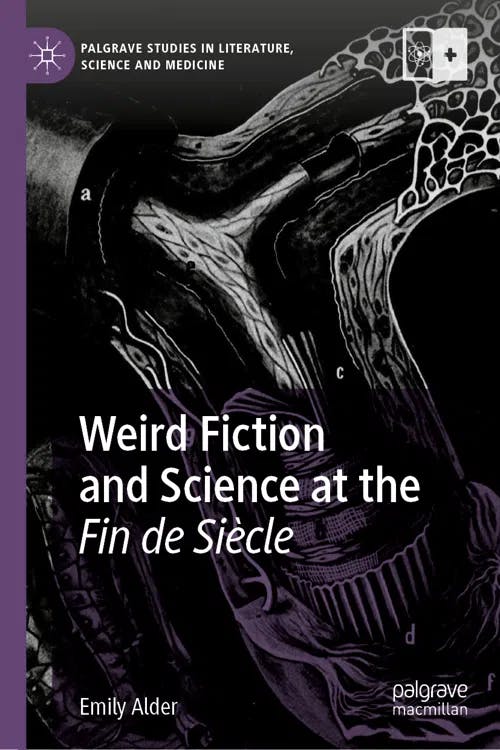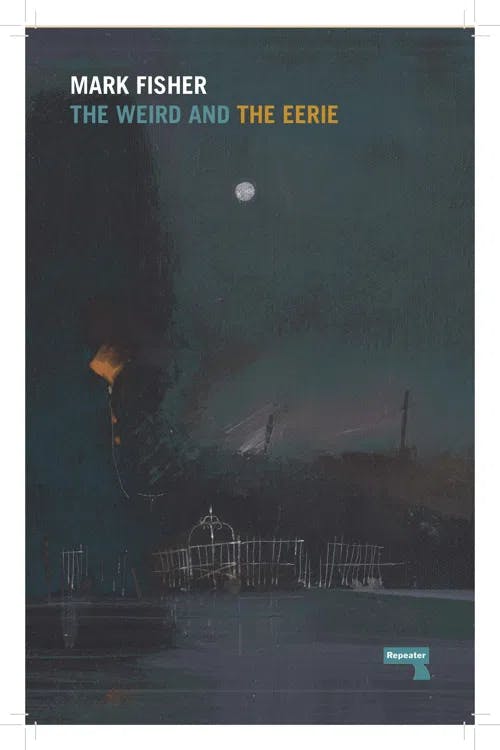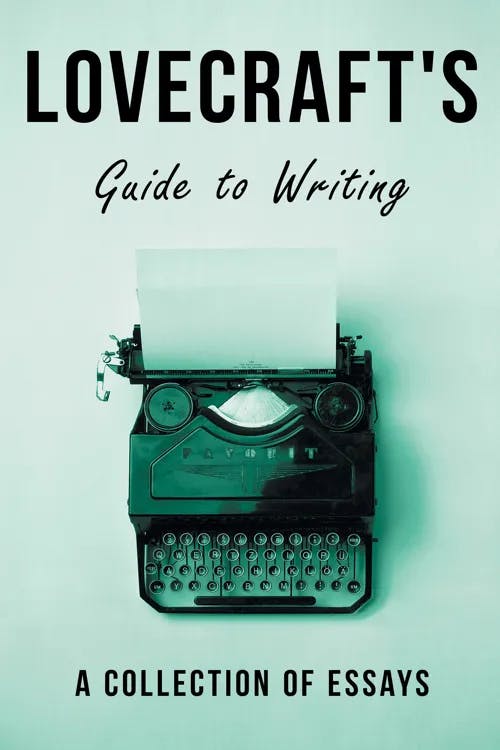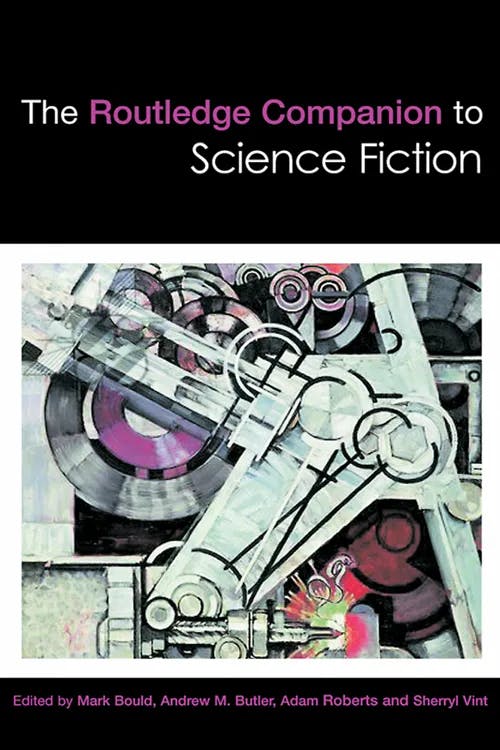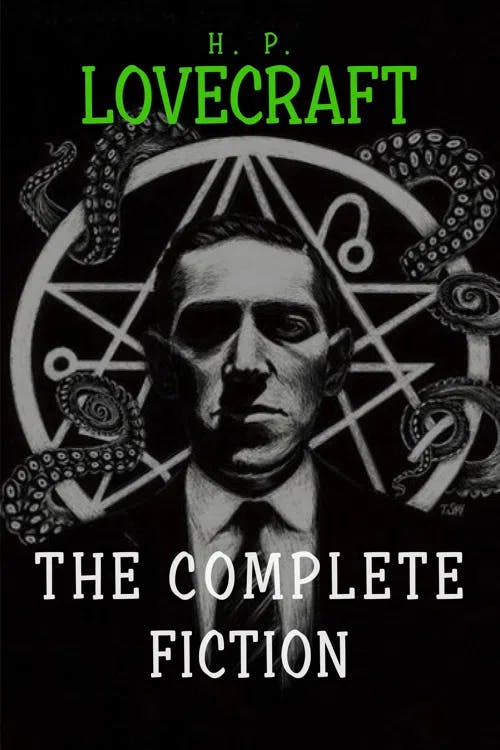What is Weird Fiction?
MA, English Literature (University College London)
Date Published: 05.09.2023,
Last Updated: 20.02.2024
Share this article
Defining weird fiction
Weird fiction, like much of what it portrays, is a strange and monstrous creature. An odd assemblage of genres, spliced together into new and unsettling forms — a roving tangle of literary limbs, evading the grasp of easy categorization.
At the basic level, we can say that weird fiction belongs to the wider family of speculative fiction as it is concerned with portraying a different reality to the one we know. In their introduction to The Weird: A Compendium of Strange and Dark Stories (2011), Ann and Jeff VanderMeer argue that
[weird fiction] represents the pursuit of some indefinable and perhaps maddeningly unreachable understanding of the world beyond the mundane [...].
This “maddeningly unreachable” quality is part of what gives weird fiction its distinctive character, and separates it from the other genres within speculative fiction (such as horror and the Gothic, fantasy, and science fiction). The eerie landscape of weird fiction is populated with bizarre monsters and dreadful circumstances which challenge any settled ideas of the “real” and transcend human comprehension itself.
Weird fiction does share some of its surface characteristics with Gothic fiction, and horror is certainly one of the key reactions it elicits (though not the only reaction, as we will explore). It is also definitely fantastical in its nature, whilst nevertheless sharing science fiction’s attempts to understand the fantastical as an aspect of our material world. As Emily Alder writes,
[The weird] novel is also horror; it is also supernatural; it is also science fiction; in name and content, it is a “borderland” tale: it is weird. (2020)
Emily Alder
[The weird] novel is also horror; it is also supernatural; it is also science fiction; in name and content, it is a “borderland” tale: it is weird. (2020)
Despite sharing some of its characteristics with these key genres, weird fiction has many distinctive elements of its own — which is why it has arisen as a named subgenre in its own right. So what exactly are these distinctive characteristics? If we crouch down to examine the writhing body of weird fiction, what can we see?
- Readers glimpse a strange new reality beyond human comprehension.
- Supernatural elements are often present, but not always. The supernatural is also often understood in materialistic terms — as something that is actually natural, though not as we know it.
- Readers and characters feel a sense of dread, horror, and — most importantly — awe.
- Characters often experience a profound disintegration of their worldview, with severe psychological consequences.
These are the main characteristics that we can observe, but let’s dig a little deeper. In The Weird and the Eerie, Mark Fisher argues that the weird is simply “that which does not belong” (2016). He explains that
the weird is a particular kind of perturbation. It involves a sensation of wrongness: a weird entity or object is so strange that it makes us feel that it should not exist, or at least it should not exist here. Yet if the entity or object is here, then the categories which we have up until now used to make sense of the world cannot be valid. The weird thing is not wrong, after all: it is our conceptions that must be inadequate. (2016)
Mark Fisher
the weird is a particular kind of perturbation. It involves a sensation of wrongness: a weird entity or object is so strange that it makes us feel that it should not exist, or at least it should not exist here. Yet if the entity or object is here, then the categories which we have up until now used to make sense of the world cannot be valid. The weird thing is not wrong, after all: it is our conceptions that must be inadequate. (2016)
Weird fiction often exhibits an unsettling quality of “wrongness,” accompanied by a sense that reality as we know it has been fatally undermined. Fisher notes that both the weird and the eerie have similarities with Sigmund Freud’s concept of the “uncanny,” but he argues that they should be understood as their own distinct modes.
On the eerie, a closely related concept which is often conflated with the weird, Fisher writes that
The perspective of the eerie can give us access to the forces which govern mundane reality but which are ordinarily obscured, just as it can give us access to spaces beyond mundane reality altogether. It is this release from the mundane, this escape from the confines of what is ordinarily taken for reality, which goes some way to account for the peculiar appeal that the eerie possesses. (2016)
Weird fiction puts us into contact with “spaces beyond mundane reality” — a key quality which is central to its appeal. Quoting H.P. Lovecraft, Fisher explains that “It is this quality of ‘real externality’ that is crucial to the weird” (2016). With weird fiction, the ordinary and internal are broken apart by the extraordinary and external (parallels can also be drawn here with the concept of abjection and its transgression of established identities and boundaries).
H.P. Lovecraft is a key player in the development of weird fiction. We will explore his fictional contributions later in the study guide, but he also made influential critical commentaries which helped to establish weird fiction’s identity as a genre. In his essay “Supernatural Horror in Literature” (1927), which can be found in Lovecraft's Guide to Writing (2020), Lovecraft outlines his own conception of “the true weird tale”:
A certain atmosphere of breathless and unexplainable dread of outer, unknown forces must be present; and there must be a hint, expressed with a seriousness and portentousness becoming its subject, of that most terrible conception of the human brain—a malign and particular suspension or defeat of those fixed laws of Nature which are our only safeguard against the assaults of chaos and the daemons of unplumbed space. (Lovecraft, 1927, [2020])
H. P. Lovecraft
A certain atmosphere of breathless and unexplainable dread of outer, unknown forces must be present; and there must be a hint, expressed with a seriousness and portentousness becoming its subject, of that most terrible conception of the human brain—a malign and particular suspension or defeat of those fixed laws of Nature which are our only safeguard against the assaults of chaos and the daemons of unplumbed space. (Lovecraft, 1927, [2020])
This kind of weird fiction has become known as “cosmic horror” or simply “Lovecraftian horror.” The horror here, though, is not in response to typical horror tropes — instead, it arrives with the awe-inspiring revelation of the universe’s incomprehensible nature and indifference to humankind. Lovecraft memorably argues that weird fiction must
[excite] in the reader a profound sense of dread, and of contact with unknown spheres and powers; a subtle attitude of awed listening, as if for the beating of black wings or the scratching of outside shapes and entities on the known universe’s utmost rim. (1927, [2020])
Weird fiction, just like the creatures it contains, intrudes upon the reader’s known universe with a strange and unsettling awareness of things beyond our comprehension. It is here that the presence of the sublime comes into play. The sublime, which is also sometimes referred to as the numinous, refers to the mind’s terrifying but awe-inspiring awareness of something beyond its full comprehension. The presence of the sublime in weird fiction, then, is one of its distinguishing characteristics — it is not just fear that weird fiction provokes, but awe. As contemporary weird fiction author China Miéville writes, “The focus is on awe, and its undermining of the quotidian. This obsession with numinosity under the everyday is at the heart of Weird Fiction” (2009). Miéville explains,
The Weird [...] punctures the supposed membrane separating off the sublime, and allows swillage of that awe and horror from beyond back into the everyday into angles, bushes, the touch of strange limbs, noises, etc. The Weird is a radicalized sublime backwash. (Miéville, “Weird Fiction,” in The Routledge Companion to Science Fiction 2009)
Edited by Mark Bould, Andrew M. Butler, Adam Roberts, and Sherryl Vint
The Weird [...] punctures the supposed membrane separating off the sublime, and allows swillage of that awe and horror from beyond back into the everyday into angles, bushes, the touch of strange limbs, noises, etc. The Weird is a radicalized sublime backwash. (Miéville, “Weird Fiction,” in The Routledge Companion to Science Fiction 2009)
If weird fiction can be briefly summarized in a sentence, then, it can be understood as a form of fiction in which the “everyday” is ruptured by “awe and horror from beyond.” Awe, again, is the crucial word here: “the weird cannot only repel, it must also compel our attention” (Fisher, 2016).
Weird origins in the nineteenth and early twentieth centuries
The origins of weird fiction are debated. As Alder explains in Weird Fiction and Science at the Fin de Siècle, “the early roots of the weird tale are entangled with those of gothic and science fiction” (2020). E.T.A. Hoffmann, Mary Shelley, Edgar Allan Poe, and Sheridan Le Fanu, among other early- and mid-nineteenth-century writers, are sometimes identified as the earliest writers of weird fiction.
It is in the late nineteenth century, however, that weird fiction really begins to adopt its own distinctive shape. It is during this period that the word “weird” began to gain increasing currency; differentiating certain literary works from the “Gothic.” Notable works from this stage of weird fiction’s history include (to name a few):
- The Great God Pan (1894) by Arthur Machen
- Strange Case of Dr Jekyll and Mr Hyde (1886) by Robert Louis Stevenson
- The King in Yellow (1895) by Robert W. Chambers
Alder also notes that it is at this stage that “weird” began to be used to “describe, retrospectively, the work of earlier writers” (2020). Alder pays particular attention to weird fiction’s relationship with the fin de siècle; the “end of the century” cultural period characterized by a profound anxiety with the present and pessimism for the future. Alder argues that fin de siècle science has a crucial role to play in the rise of weird fiction — although scientific progress was fast and far-reaching, many destabilizing uncertainties still remained. This atmosphere of anxiety and uncertainty proved fertile ground for speculative writers, who populated scientific gaps with weird visions:
These stories [...] find weird crevices in nineteenth-century science and prise the cracks open to imaginatively explore what the implications might be. (Alder, 2020)
Weird fiction of the late nineteenth century gave imaginative voice to the same sense of cosmic mystery and human insignificance which haunted contemporary science and philosophy. As Alder outlines,
Recurring ideas (such as unknowable dimensions, radical teratology, unspeakability) now strongly associated with the weird tale, developed markedly in the crucible of fin-de-siècle science and culture (if not necessarily originating in it). Science is not just an interesting lens through which to interrogate weird fiction, but is integral to the emergence of the weird tale as a new mode in the second half of the nineteenth century. At the same time, weird tales speak back to science through their explorations of often similar philosophical or theoretical questions. (2020)
Emily Alder
Recurring ideas (such as unknowable dimensions, radical teratology, unspeakability) now strongly associated with the weird tale, developed markedly in the crucible of fin-de-siècle science and culture (if not necessarily originating in it). Science is not just an interesting lens through which to interrogate weird fiction, but is integral to the emergence of the weird tale as a new mode in the second half of the nineteenth century. At the same time, weird tales speak back to science through their explorations of often similar philosophical or theoretical questions. (2020)
Although Gothic and science fiction may be said to play a similar role, it is weird fiction’s focus on the limits of human knowledge which are notably distinctive here. As Alder argues, Robert Louis Stevenson’s Strange Case of Dr Jekyll and Mr Hyde (1886) and Arthur Machen’s The Great God Pan (1894) “did much to establish the terms of the weird tale in the late nineteenth century,” as they “use scientific ideas to rationalise the generating of a weird monster that then exceeds the capacity of science to know it” (2020). Whereas science fiction may seek to explain extraordinary circumstances, and Gothic fiction may focus on their horror, weird fiction is especially focused on how they explode our comfortable, human-centric worldview: “Hyde always remains unknowable, a representative of realms of existence beyond those of the human” (2020).
In summary, then: although earlier fiction can be plausibly described as “weird,” many scholars trace the true genesis of weird fiction to the late nineteenth and early twentieth centuries.
As we progress into the twentieth century, weird fiction continues to develop and sprout new limbs — with the failures of “capitalist modernity” and the horrors of the First World War, in China Miéville’s view, a potent factor:
The heart of the crisis is the First World War, where mass carnage perpetrated by the most modern states made claims of a “rational” modern system a tasteless joke.
The fantastic has always been indispensable to think and unthink society, but traditional monsters were now profoundly inadequate, suddenly nostalgic in the epoch of modern war. Out of this crisis of traditional fantastic, the burgeoning sense that there is no stable status quo but a horror underlying the everyday, the global and absolute catastrophe implying poisonous totality, Weird Fiction’s revolutionary teratology and oppressive numinous grows. (2009)
From this period, William Hope Hodgson is particularly notable for his brand of cosmic weirdness — with The House on the Borderland (1908) receiving particular praise. Sadly, Hodgson himself was one of the First World War’s many victims. Although his career was prematurely cut short, he would have a huge influence on subsequent weird writers such as H.P. Lovecraft.
Weird Tales and H.P. Lovecraft
The arrival of the popular Weird Tales magazine in 1923 is a notable milestone in the development of weird fiction. As well as publishing new weird fiction, it also
enveloped most of the long nineteenth century, publishing, in its first decade, verse from Blake to Charles Baudelaire, and short stories from Poe to Guy de Maupassant, Bram Stoker, and H. G. Wells, alongside original new fiction. The weird tale underwent, like science fiction, a process of enrolment through which pre-existing writing was gathered together under a new label. (Alder, 2020)
With the appearance of its own magazine, and the consolidation of previous work under its umbrella, weird fiction was continuing to grow in strength.
The most notable new writer contributing to Weird Tales was H.P. Lovecraft — who would go on to become the most famous name associated with weird fiction, and emblematic of the genre as a whole. As well as creating its most well-known fictional works, his non-fictional writing on the nature of the weird have been influential in the development of its identity (as we have explored in the opening section above).
Although Lovecraft’s literary popularity and influence cannot be contested, this must not be confused with praise for the man himself, who is now recognized as a virulent racist and white supremacist. Lovecraft’s homophobia and misogyny have also been highlighted by critics, and this awareness of his prejudiced views has opened up intriguing interpretative avenues — with Lovecraft’s depiction of cosmic otherness being read in light of his fear and hatred of otherness on earth.
Throughout his fiction, Lovecraft develops a distinctive form of weirdness. His stories are suffused with dread, terror, and awe on a cosmic scale. The key driver of this experience is the intrusion of the outside upon the inside (often along with the realization that the outside has actually been here all along). As Fisher writes,
Lovecraft’s stories are obsessively fixated on the question of the outside: an outside that breaks through in encounters with anomalous entities from the deep past, in altered states of consciousness, in bizarre twists in the structure of time. The encounter with the outside often ends in breakdown and psychosis. (2016)
Mark Fisher
Lovecraft’s stories are obsessively fixated on the question of the outside: an outside that breaks through in encounters with anomalous entities from the deep past, in altered states of consciousness, in bizarre twists in the structure of time. The encounter with the outside often ends in breakdown and psychosis. (2016)
But the weird manifestations which cause such mind-melting terror for Lovecraft’s protagonists are notable not for their malignancy towards humankind, but their indifference. Lovecraft’s philosophy here is known as cosmicism — which stresses humanity’s small place in an incalculably vast and indifferent universe. It is the indifference of the universe and its ancient entities, rather than any malignancy, which is the source of weird horror and awe here. Lovecraft’s weird fiction shows us ourselves, and the universe, from an external perspective that transcends the human-centric approach that we are used to. As Alder writes,
The Lovecraftian weird universe is a vast, incomprehensible, and indifferent place, without human teleology. [...] Weird is not a consolatory form; it replaces a fatalistic totality with a cosmos decidedly not organised around the fulfilment of human narratives or fantasies. The “evils” of weird fiction are amoral and generalised forces; the narratives are not arranged around a binary of good and evil or according to a moral code. (2020)
Of all such unspeakably ancient and indifferent cosmic entities, Cthulhu is undoubtedly the most well-known. Slumbering beneath the waves, with his worshippers praying for the catastrophic day his huge form awakens, Cthulhu has become a mascot for Lovecraft’s fiction — as well as a byword for the concept of cosmic terror and weird fiction as a whole. Lovecraft established the Cthulhu mythos, as it has become known, with the 1928 publication of “The Call of Cthulhu” in Weird Tales. Here, the titular entity is described as
a monster of vaguely anthropoid outline, but with an octopus-like head whose face was a mass of feelers, a scaly, rubbery-looking body, prodigious claws on hind and fore feet, and long, narrow wings behind. (1928, [2020])
H. P. Lovecraft
a monster of vaguely anthropoid outline, but with an octopus-like head whose face was a mass of feelers, a scaly, rubbery-looking body, prodigious claws on hind and fore feet, and long, narrow wings behind. (1928, [2020])
Cthulhu is also referred to, however, as a “Thing” that “cannot be described”:
there is no language for such abysms of shrieking and immemorial lunacy, such eldritch contradictions of all matter, force, and cosmic order. (1928, [2020])
Such a seeming paradox also lies at the heart of weird fiction as a whole: how can you communicate the incommunicable? Weird fiction deals in that which is meant to be beyond human language and comprehension, and yet it must still be created (and comprehended) by humans. The “octopus-like” appearance of Cthulhu illustrates this: Cthulhu is an eldritch, unspeakable horror that must nevertheless be described with reference to earthly creatures in order to be described at all (as with many other monsters). We are all working within the limits of the human imagination, after all, and so it is perhaps impossible for us to imagine a truly alien being which transcends our existing frames of reference. As with horror, it could be argued that weird fiction retains its greatest powers when it only gestures at the unknown — rather than attempting to describe the unknown in a way that reduces it to the knowable. Despite its earthly origins, the tentacle — epitomized by Cthulhu — has now come to be seen as “a symbol of modern weird” (Ann and Jeff VanderMeer, 2011).
In “Notes on Writing Weird Fiction” (1933), Lovecraft recognizes that weird fiction may only succeed in representing a “vague illusion of the strange reality of the unreal.” Despite these challenges, Lovecraft remained committed to the task:
I choose weird stories because they suit my inclination best—one of my strongest and most persistent wishes being to achieve, momentarily, the illusion of some strange suspension or violation of the galling limitations of time, space, and natural law which for ever imprison us and frustrate our curiosity about the infinite cosmic spaces beyond the radius of our sight and analysis. (1933, [2020])
H. P. Lovecraft
I choose weird stories because they suit my inclination best—one of my strongest and most persistent wishes being to achieve, momentarily, the illusion of some strange suspension or violation of the galling limitations of time, space, and natural law which for ever imprison us and frustrate our curiosity about the infinite cosmic spaces beyond the radius of our sight and analysis. (1933, [2020])
Even if the illusion is momentary and imperfect, weird fiction still provides an awe-inspiring sense that we are liberated from reality and can truly experience those “infinite cosmic spaces beyond.”
Weird writers
Although Lovecraft is weird fiction’s most famous and influential figure, weird fiction as a whole is not defined by him. Literature of a recognizably “weird” nature was clearly influential before Lovecraft, and weird fiction has flourished ever since.
Many authors have created weird fiction — even if some are more well-known for their work in other genres. Just a few notable authors of weird tales in the twentieth century include:
- M.R. James
- Algernon Blackwood
- William Hope Hodgson
- Franz Kafka
- Jorge Luis Borges
- Daphne du Maurier
- Ray Bradbury
- Mervyn Peake
- Michael Moorcock
- Stephen King
Although the weird tales produced by such authors exhibit a great variety and range, they are nevertheless united by a weird impulse. As Ann and Jeff VanderMeer explain,
What all of these writers [...] shared was some element of the visionary in their writing, some impulse or worldview that catapulted them beyond the everyday. In some, it is expressed in their writing as just a glimmer or glint from a deep well. In others it is a great, raging fire at the center of their work. In either instance, subtle or bold, The Weird acknowledges that our search for understanding about worlds beyond our own cannot always be found in science or religion and thus becomes an alternative path for exploration of the numinous. (2011)
Weird writers are united by a desire to explore, and express, the strangeness of reality — and the inadequacy of any available explanatory mechanisms we have. The result is weird fiction, in all its variety.
A weird present and future
Weird fiction is flourishing in the twenty-first century, too, with contemporary writers such as China Miéville (Perdido Street Station [2000]) and Jeff VanderMeer (City of Saints and Madmen [2001]) often seen as belonging to the “New Weird” renaissance. And what does the future hold for weird fiction? In the words of Ann and Jeff VanderMeer,
What The Weird holds next for readers is unclear, but given the past manifestations, we can be sure it will [be] adaptable, idiosyncratic, and involve some of our best stylists. It will also continue to be at times discredited, misunderstood, and denigrated for being unapologetically transgressive, imaginative, and strange. Nonetheless, The Weird will endure. (2011)
With its laser-focus on the strangeness of our reality, and its insistence that science and religion cannot provide all the answers, weird tales “remain universal because they entertain while also expressing our own dissatisfaction with, and uncertainty about, reality” (Ann and Jeff VanderMeer, 2011). Even now, there are gaping gaps in our knowledge where weird visions of terror, awe, and wonder can thrive. Tantalizing questions of science and philosophy remain unanswered, with just one example being the nature of dark matter and dark energy. Although they comprise 95% of the universe, we cannot actually observe them directly — leaving us to imagine an endless supply of weird possibilities. We may be in the twenty-first century, but we are still listening for “the beating of black wings or the scratching of outside shapes and entities on the known universe’s utmost rim” (Lovecraft, 1927, [2020]).
Further reading on Perlego
- 50 Masterpieces of Occult & Supernatural Fiction Vol. 1. (2020)
- The American Weird (2020), edited by Julius Greve and Florian Zappe
- The Greatest Ghost and Horror Stories Ever Written: volume 1. (2019)
- Genre Fiction of New India (2016) by E. Dawson Varughese
- H. P. Lovecraft: Against the World, Against Life (2019) by Michel Houellebecq
- Surreal Entanglements: Essays on Jeff VanderMeer's Fiction (2021), edited by Louise Economides and Laura Shackelford
- American Gothic: An Anthology from Salem Witchcraft to H. P. Lovecraft (2012), edited by Charles L. Crow
What is weird fiction in simple terms?
What is the difference between weird fiction and horror fiction?
What is an example of weird fiction?
What are the best weird fiction books?
Bibliography
Alder, E. (2020) Weird Fiction and Science at the Fin de Siècle. Springer International Publishing. Available at: https://www.perlego.com/book/3480458/weird-fiction-and-science-at-the-fin-de-sicle-pdf
Blackwood, A. (2022) Ancient Sorceries. Pushkin Press. Available at: https://www.perlego.com/book/3562285/ancient-sorceries-pdf
Bould, M. et al. (eds.) (2009) The Routledge Companion to Science Fiction. Taylor and Francis. Available at: https://www.perlego.com/book/1609365/the-routledge-companion-to-science-fiction-pdf
Chambers, R. (2014) The King in Yellow. Atria Books. Available at: https://www.perlego.com/book/778340/the-king-in-yellow-pdf
Clegg, B. (2019) Dark Matter and Dark Energy. Icon Books. Available at: https://www.perlego.com/book/969123/dark-matter-and-dark-energy-the-hidden-95-of-the-universe-pdf
Fisher, M. (2016) The Weird and the Eerie. Repeater Books. Available at: https://www.perlego.com/book/3043252/the-weird-and-the-eerie-pdf
Gonzalez, A. A. and Sederholm, C. (eds.) (2021) Lovecraft in the 21st Century: Dead, But Still Dreaming. Taylor and Francis. Available at: https://www.perlego.com/book/3118240/lovecraft-in-the-21st-century-dead-but-still-dreaming-pdf
Lovecraft, H. (2020) H. P. Lovecraft: The Complete Fiction. Pandora’s Box. Available at: https://www.perlego.com/book/2723059/h-p-lovecraft-the-complete-fiction-pdf
Lovecraft, H. (2020) Lovecraft’s Guide to Writing. Read Books Ltd. Available at: https://www.perlego.com/book/1484485/lovecrafts-guide-to-writing-pdf
Hodgson, W. H. (2020) Essential Novelists - William Hope Hodgson. Tacet Books. Available at: https://www.perlego.com/book/1888893/essential-novelists-william-hope-hodgson-pieces-of-macabre-imagination-pdf
Hodgson, W. H. (2003) The House on the Borderland. Perlego. Available at: https://www.perlego.com/book/1843040/the-house-on-the-borderland-pdf
Machen, A. (2017) The Great God Pan. Open Road Media. Available at: https://www.perlego.com/book/2427716/the-great-god-pan-pdf
Miéville, C. (2011) Perdido Street Station. Pan.
Miéville, C. “Weird Fiction,” in Bould, M. et al. (eds.) (2009) The Routledge Companion to Science Fiction. Taylor and Francis. Available at: https://www.perlego.com/book/1609365/the-routledge-companion-to-science-fiction-pdf
Newell, J. (2020) A Century of Weird Fiction, 1832-1937. University of Wales Press. Available at: https://www.perlego.com/book/1433282/a-century-of-weird-fiction-18321937-disgust-metaphysics-and-the-aesthetics-of-cosmic-horror-pdf
Peake, M. (2007) The Gormenghast Trilogy. Vintage Classics.
Stevenson, R. L. (2015) Strange Case of Dr Jekyll and Mr Hyde. 3rd edn. Broadview Press. Available at: https://www.perlego.com/book/2030514/strange-case-of-dr-jekyll-and-mr-hyde-third-edition-pdf
VanderMeer, A. and J. (eds.) (2011) The Weird: A Compendium of Strange and Dark Stories. Corvus.
VanderMeer, J. (2018) City of Saints and Madmen. Pan.
MA, English Literature (University College London)
Andy Cain has an MA in English Literature from University College London, and a BA in English and Creative Writing from Royal Holloway, University of London. His particular research interests include science fiction, fantasy, and the philosophy of art. For his MA dissertation, he explored the presence of the sublime in Shakespeare’s plays.

